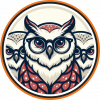Greetings all, after working for many years in Sumatra, I know that tackling the illegal wildlife trade is hugely complicated and is made more given that items in trade may be small body parts - for instance porcupine gall bladder stones(!), tiger and bear claws, canines from big cats while elephant ivory is often sawn into smaller pieces to make it easier to transport and more difficult to identify. Is it not possible that a recognition app could be developed to help make an initial identification of suspect items?
29 July 2020 11:41pm
It's absolutely possible, but the challenge would be collecting the right training data! You would need to curate lots of labeled example images of each type of illegal item you were interested in catching, and also labeled examples of any similar, legal items so the model could learn to disambiguate between what is legal and illegal. I remember hearing a few years ago that eBay was interested in detecting black market items from images on their site, but I'm not sure if they had any success.
30 July 2020 10:09am
Thanks Sara, Interesting! Actually 'a second problem (particularly Big Cat canines and elephant ivory) is not so much what is legal and what is illegal but what is Real versus 'Fake' (a lot of tiger canines are actually bone from cattle femurs/tibia!). On the 'library' there is a pretty big volume of photographic data out there from NGO (and other) investigations and blackmarket monitoring. How many images does 'The Machine' need to start learning, do you estimate?
30 July 2020 3:05pm
Good point, you have to learn to recognise these things and, I guess, there are a whole load of other factors in the learning process other than just visual
30 July 2020 4:09pm
I think probably the best starting point is to try to understand how humans do it, maybe by talking to experts? That will help inform any dataset curation decisions you would make!








Sara Beery